Assessing the Openness and Conviviality of Open Source Technology: The Case of the WikiHouse
Abstract
1. Introduction
2. Theoretical Framework
2.1. Design Global, Manufacture Local in a Nutshell
2.2. Defining “Conviviality”
2.3. The Concept of “Openness”
3. The Case of the WikiHouse Den Bosch
3.1. Materials and Methods
3.2. The WikiHouse Den Bosch
4. Analysis
4.1. The Conviviality Aspect
4.2. The Openness Aspect
5. Conclusions
Author Contributions
Funding
Acknowledgments
Conflicts of Interest
Appendix A
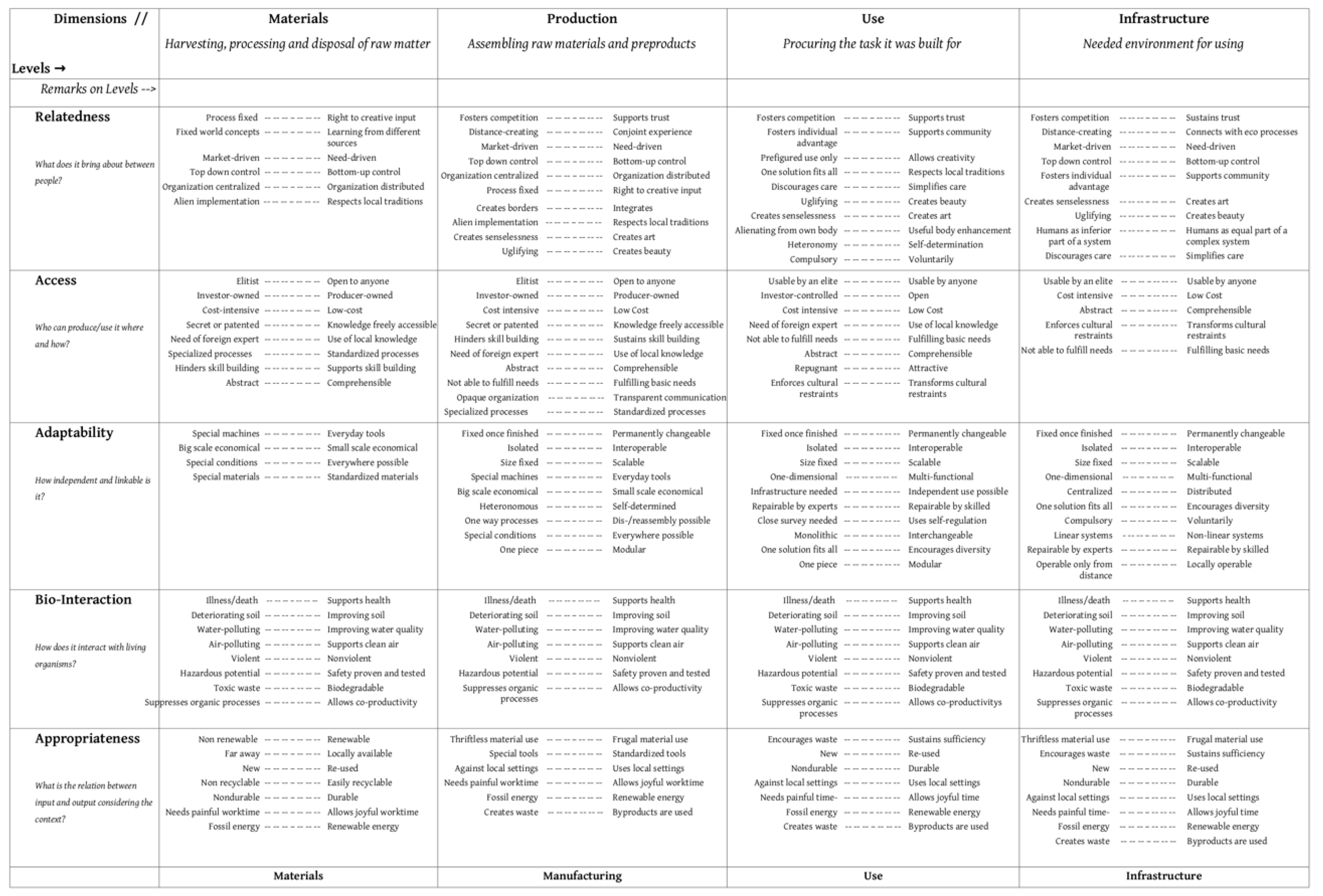
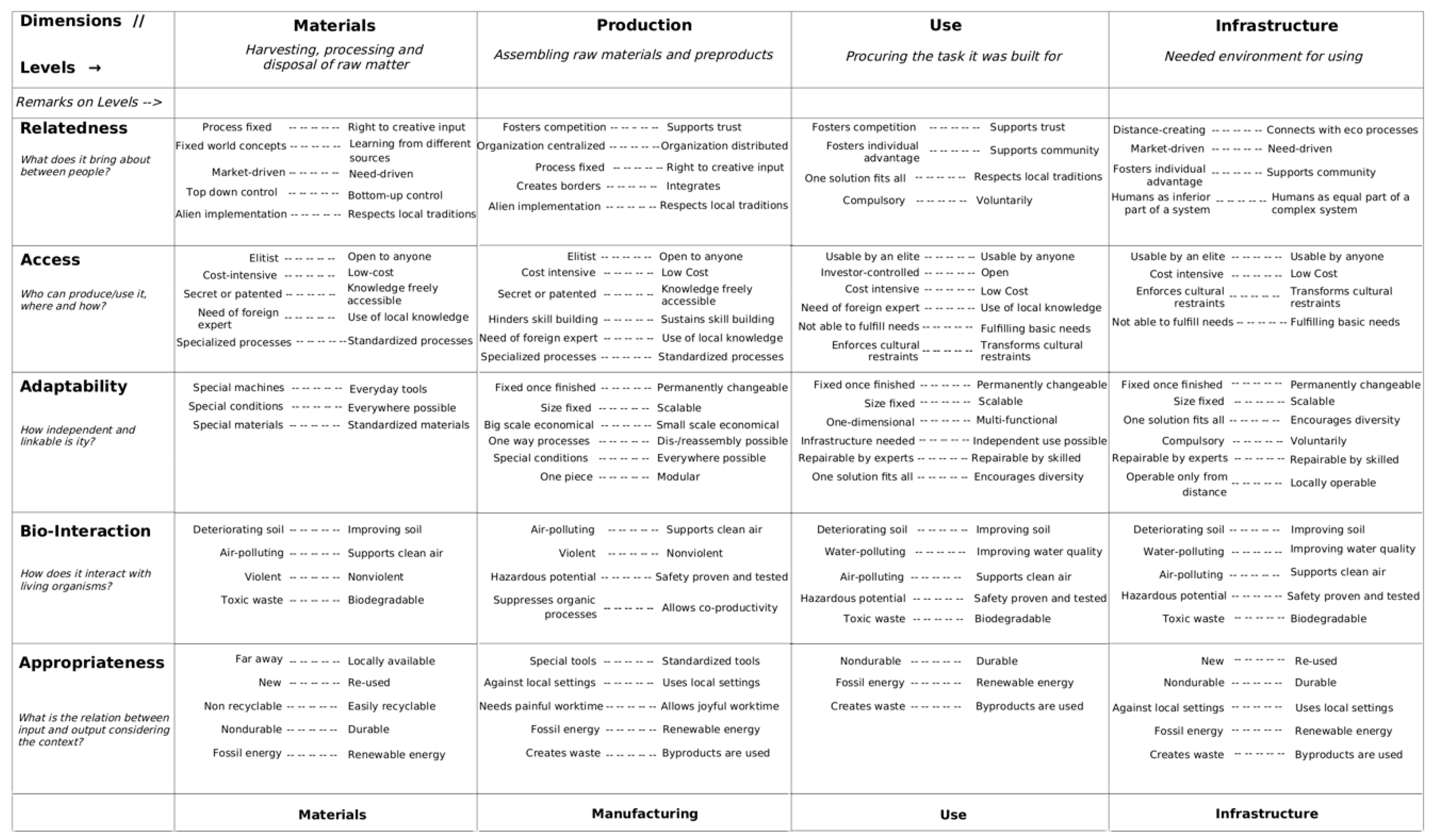
| open-O-meter | |||
|---|---|---|---|
| Which sources have you opened? | |||
| YES | NO | ||
| 1 | Are the design files published? | ||
| Technical components of the product are publicly available (CAD-files, computer code etc.) | |||
| 2 | Are the assembly instructions published? | ||
| Instructions for how to assemble are quickly available | |||
| 3 | Is the bill of materials published? | ||
| The product’s bill of material is publicly available | |||
| 4 | Is the contributing guide published? | ||
| A guide for how users can contribute is available | |||
| 5 | Are the published design files in editable formats? | ||
| One or more of the file formats used is in editable format | |||
| 6 | Are the published assembly instructions in editable formats? | ||
| The assembly instructions are published in editable format | |||
| 7 | Is the published bill of materials in editable format? | ||
| The bill of materials is published in editable format | |||
| 8 | Is all this information published under a license allowing commercial reuse? | ||
| An open source license is used that allows users to commercially reuse the product | |||
Appendix B
| Respondents | Gender | Expertise | Engagement in the Construction |
|---|---|---|---|
| Respondent 1 (Instigator) | F | Art therapist | Consistent |
| Respondent 2 (Adviser) | M | Project manager | Consistent |
| Respondent 3 | F | Social worker | Consistent |
| Respondent 4 | F | Engineer | Occasional |
| Respondent 5 | M | Business consultant | Occasional |
| Respondent 6 | F | HR specialist | Occasional |
| Respondent 7 | F | Artist | Occasional |
| Respondent 8 | M | Teacher | Consistent |
| Respondent 9 | M | Economist | Occasional |
| Respondent 10 | M | Engineer | Consistent |
| Respondents | Gender | Expertise | Organization/Project |
|---|---|---|---|
| Vincent Muller | M | Architect | Co-founder of WikiHouseNL Foundation, WIkiHouse in Almere |
| Rolf van Boxmeer | M | Architect | Co-designer of WikiHouse Den Bosch/Minitopia |
| Tessa Peters | F | Architect | Co-designer of WikiHouse Den Bosch/Minitopia |
References
- Benkler, Y. The Wealth of Networks: How Social Production Transforms Markets and Freedom; Yale University Press: New Haven, CT, USA, 2006. [Google Scholar]
- Bauwens, M. The political economy of peer production. Post-Autistic Econ. Rev. 2006, 37, 33–44. [Google Scholar]
- Balka, K.; Raasch, C.; Herstatt, C. The effect of selective openness on value creation in user innovation communities. J. Prod. Innov. Manag. 2013, 31, 392–407. [Google Scholar] [CrossRef]
- Kohtala, C.; Hyysalo, S. Anticipated environmental sustainability of personal fabrication. J. Clean. Prod. 2015, 99, 333–344. [Google Scholar] [CrossRef]
- Niaros, V. Introducing a taxonomy of the “smart city”: Towards a commons-oriented approach? tripleC 2016, 14, 51–61. [Google Scholar] [CrossRef][Green Version]
- Niaros, V.; Kostakis, V.; Drechsler, W. Making (in) the smart city: The emergence of makerspaces. Telemat. Inform. 2017, 34, 1143–1152. [Google Scholar] [CrossRef]
- Troxler, P. Libraries of the peer production era. In Open Design Now: Why Design Cannot Remain Exclusive; Van Abel, B., Evers, L., Klaassen, R., Troxler, P., Eds.; BIS Publishers: Amsterdam, The Netherlands, 2011; pp. 86–95. [Google Scholar]
- Kostakis, V.; Niaros, V.; Dafermos, G.; Bauwens, M. Design global, manufacture local: Exploring the contours of an emerging productive model. Futures 2015, 73, 126–135. [Google Scholar] [CrossRef]
- Kostakis, V.; Liarokapis, M.; Latoufis, K.; Bauwens, M. The convergence of digital commons with local manufacturing from a degrowth perspective: Two illustrative cases. J. Clean. Prod. 2016, 197, 1684–1693. [Google Scholar] [CrossRef]
- Bonvoisin, J.; Mies, R.; Boujut, J.F.; Stark, R. What is the “source” of open source hardware? J. Open Hardw. 2017, 1, 5. [Google Scholar] [CrossRef]
- U.S. Green Building Council. Buildings and Climate Change; U.S. Green Building Council: Washington, DC, USA, 2018; Available online: http://www.eesi.org/files/climate.pdf (accessed on 5 August 2019).
- Priavolou, C. The emergence of open construction systems: A sustainable paradigm in the construction sector? J. Futures Stud. 2018, 23, 67–84. [Google Scholar]
- Kostakis, V. How to reap the benefits of the “digital revolution”? Modularity and the commons. Halduskultuur 2019, in press. [Google Scholar]
- Stake, R. The Art of Case Study Research; Sage: Thousand Oaks, CA, USA, 1995. [Google Scholar]
- Parvin, A. Architecture (and the other 99%): Open-source architecture and design commons. Archit. Des. 2013, 83, 90–95. [Google Scholar] [CrossRef]
- Kohtala, C. Addressing sustainability in research on distributed production: An integrated literature review. J. Clean. Prod. 2015, 106, 654–668. [Google Scholar] [CrossRef]
- Benkler, Y.; Shaw, A.D.; Hill, B.M. Peer production: A modality of collective intelligence. In Handbook of Collective Intelligence; Malone, T.W., Bernstein, M.S., Eds.; MIT Press: Cambridge, MA, USA, 2015; pp. 175–203. [Google Scholar]
- Illich, I. Energy and Equity; Calder and Boyars: London, UK, 1974. [Google Scholar]
- March, H.; Ribera-Fumaz, R. Smart contradictions: The politics of making Barcelona a self-sufficient city. Europ. Urb. Reg. Stud. 2016, 23, 816–830. [Google Scholar] [CrossRef]
- Illich, I. Tools for Conviviality; Fontana/Collins: Glasgow, Scotland, 1973. [Google Scholar]
- Bijker, W.E. Of Bicycles, Bakelites, and Bulbs: Toward a Theory of Socio-Technical Change; MIT Press: Cambridge, MA, USA, 1997. [Google Scholar]
- Latour, B. We Have Never Been Modern; Harvard University Press: Cambridge, MA, USA, 1993. [Google Scholar]
- Bradley, K. Bike kitchens: Spaces for convivial tools. J. Clean. Prod. 2018, 197, 1676–1683. [Google Scholar] [CrossRef]
- March, H. The smart city and other ICT-led techno-imaginaries: Any room for dialogue with degrowth? J. Clean. Prod. 2018, 197, 1694–1703. [Google Scholar] [CrossRef]
- Lizarralde, I.; Tyl, B. A framework for the integration of the conviviality concept in the design process. J. Clean. Prod. 2017, 197, 1766–1777. [Google Scholar] [CrossRef]
- Samerski, S. Tools for degrowth? Ivan Illich’s critique of technology revisited. J. Clean. Prod. 2018, 197, 1637–1646. [Google Scholar] [CrossRef]
- Mies, R.; Bonvoisin, J.; Jochem, R. Harnessing the synergy potential of open source hardware communities. In Co-Creation: Reshaping Business and Society in the Era of Bottom-Up Economics; Redlich, T., Moritz, M., Wulfsberg, J.P., Eds.; Springer: Berlin, Germany, 2018; pp. 129–145. [Google Scholar]
- Giotitsas, C. Open Source Agriculture: Grassroots Technology in the Digital Era; Palgrave Macmillan: Basingstoke, UK, 2019. [Google Scholar]
- MacKenzie, D.; Wajcman, J. The Social Shaping of Technology; Open University Press: Milton Keynes, UK, 1985. [Google Scholar]
- Vetter, A. The matrix of convivial technology: Assessing technologies for degrowth. J. Clean. Prod. 2018, 197, 1778–1786. [Google Scholar] [CrossRef]
- Von Hippel, E. Comment on is open innovation a field of study or a communication barrier to theory development? Technovation 2010, 30, 555. [Google Scholar] [CrossRef]
- Aitamurto, T.; Holland, D.; Hussain, S. The open paradigm in design research. Des. Issues 2015, 31, 17–29. [Google Scholar] [CrossRef]
- Maxwell, E. Open standards, open source, and open innovation: Harnessing the benefits of openness. Innov. Tech. Gov. Glob. 2006, 1, 119–176. [Google Scholar] [CrossRef]
- Baldwin, C.; von Hippel, E. Modeling a paradigm shift: From producer innovation to user and open collaborative innovation. Organ. Sci. 2011, 22, 1399–1417. [Google Scholar] [CrossRef]
- Raasch, C.; Herstatt, C. Product development in open design communities: A process perspective. Inter. J. Innov. Tech. Manag. 2011, 8, 557–575. [Google Scholar] [CrossRef]
- Lakhani, K.; Wolf, R. Why hackers do what they do: Understanding motivation and effort in free/open source software projects. In Perspectives on Free and Open Source Software; Feller, J., FitzGerald, B., Hissam, S., Lakhani, K., Eds.; MIT Press: Cambridge, MA, USA, 2005. [Google Scholar]
- Thorne, M.; Openwashing. Michelle Thorne 2019. Available online: https://michellethorne.cc/2009/03/openwashing/ (accessed on 5 August 2019).
- Wiley, D.; The Consensus Around “Open”. Open Content 2016. Available online: https://opencontent.org/blog/archives/4397 (accessed on 5 August 2019).
- Yin, R.K. Case Study Research: Design and Methods; Sage: Thousand Oaks, CA, USA, 2003. [Google Scholar]
- Rieger, J.H. Key informant. In Blackwell Encyclopedia of Sociology; Ritzer, G., Ed.; Blackwell: Malden, MA, USA, 2007. [Google Scholar]
- MacDonald, C. Understanding participatory action research: A qualitative research methodology option. Can. J. Action Res. 2012, 13, 34–50. [Google Scholar]
- McTaggart, R. Participatory Action Research; State University of New York Press: New York, NY, USA, 1997. [Google Scholar]
- Murthy, D. Digital ethnography: An examination of the use of new technologies for social research. Sociology 2008, 42, 837–855. [Google Scholar] [CrossRef]
- Open-O-Meter. OPEN! 2017. Available online: https://opensourcedesign.cc/wiki/index.php/Open-O-meter (accessed on 5 August 2019).
- Bonvoisin, J. Implications of open source design for sustainability. In Smart Innovation, Systems and Technologies; Setchi, R., Howlett, R.J., Liu, Y., Theobald, P., Eds.; Springer: Berlin, Germany, 2016; pp. 49–59. [Google Scholar]
- WikiHouseNL. Available online: https://wikihousenl.cc/stichtingwhnl/ (accessed on 5 August 2019).
- Knight, H. An Incomplete List of Complete WikiHouse Projects. Available online: https://medium.com/wikihouse-stories/an-incomplete-list-of-wikihouse-projects-bf934c29ed04 (accessed on 5 August 2019).
- De Architect. Almere en Rijk Starten Woningbouwatelier. Available online: https://www.dearchitect.nl/architectuur/nieuws/2014/02/almere-en-rijk-starten-woningbouwatelier-101122695 (accessed on 5 August 2019).
- Minitopia. Minitopia Poeldonk. Available online: http://www.minitopia.eu/ (accessed on 5 August 2019).
- Van de Ven, J. Maximaal vijf jaar Minitopia in de Poeldonk met 25 woningen. Available online: https://www.bd.nl/s-hertogenbosch/maximaal-vijf-jaar-minitopia-in-de-poeldonk-met-25-woningen~a9675ec8/ (accessed on 5 August 2019).
- Den Bosch Nieuws. Opening Eerste Bewoonde Wikihouse van Nederland! Available online: https://den-bosch.nieuws.nl/nieuws/85792/opening-eerste-bewoonde-wikihouse-van-nederland/ (accessed on 5 August 2019).
- Minitopia. WikiHouse. Available online: http://www.minitopia.eu/bewoners-en-hun-droomhuizen.html#wikihouse (accessed on 5 August 2019).
- Bonvoisin, J.; Mies, R. Measuring openness in open source hardware with the open-O-meter. Procedia CIRP 2018, 78, 388–393. [Google Scholar] [CrossRef]
- OPEN! List of Open Source Hardware Products. Available online: https://opensourcedesign.cc/wiki/index.php/List_of_open_source_hardware_products (accessed on 5 August 2019).
- Open System Labs. Available online: https://www.opensystemslab.io/ (accessed on 5 August 2019).
- Wikihouse Den Bosch. Helpende Handen. Available online: https://wikihousedenbosch.com/helpende-handen/ (accessed on 5 August 2019).
- Creative Commons. Available online: https://creativecommons.org/licenses/by-sa/3.0/ (accessed on 5 August 2019).
- MicroHouse. Available online: https://wikifab.org/wiki/MicroHouse (accessed on 5 August 2019).
- Creative Commons License. Available online: https://creativecommons.org/licenses/by-sa/4.0/ (accessed on 5 August 2019).
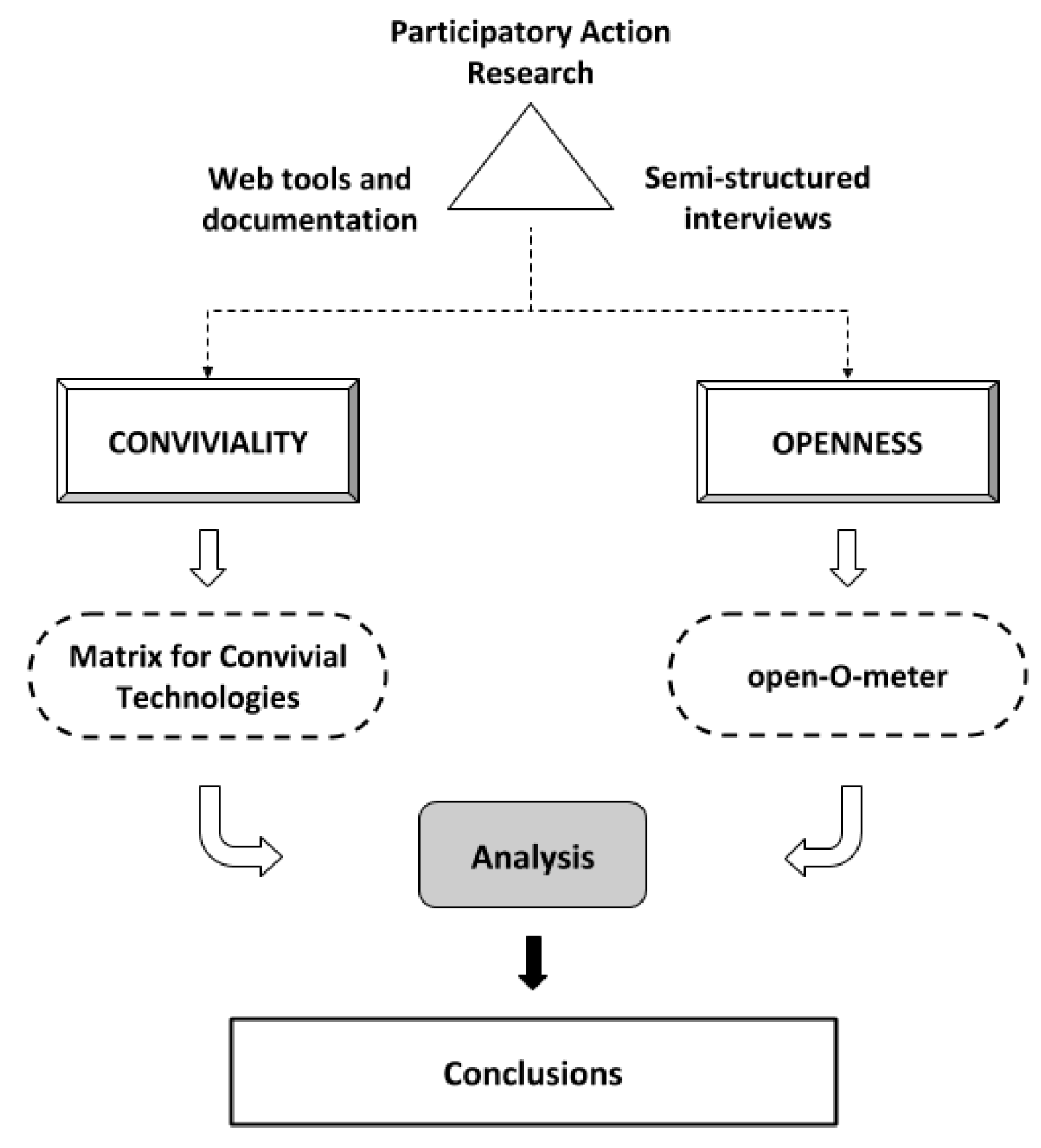
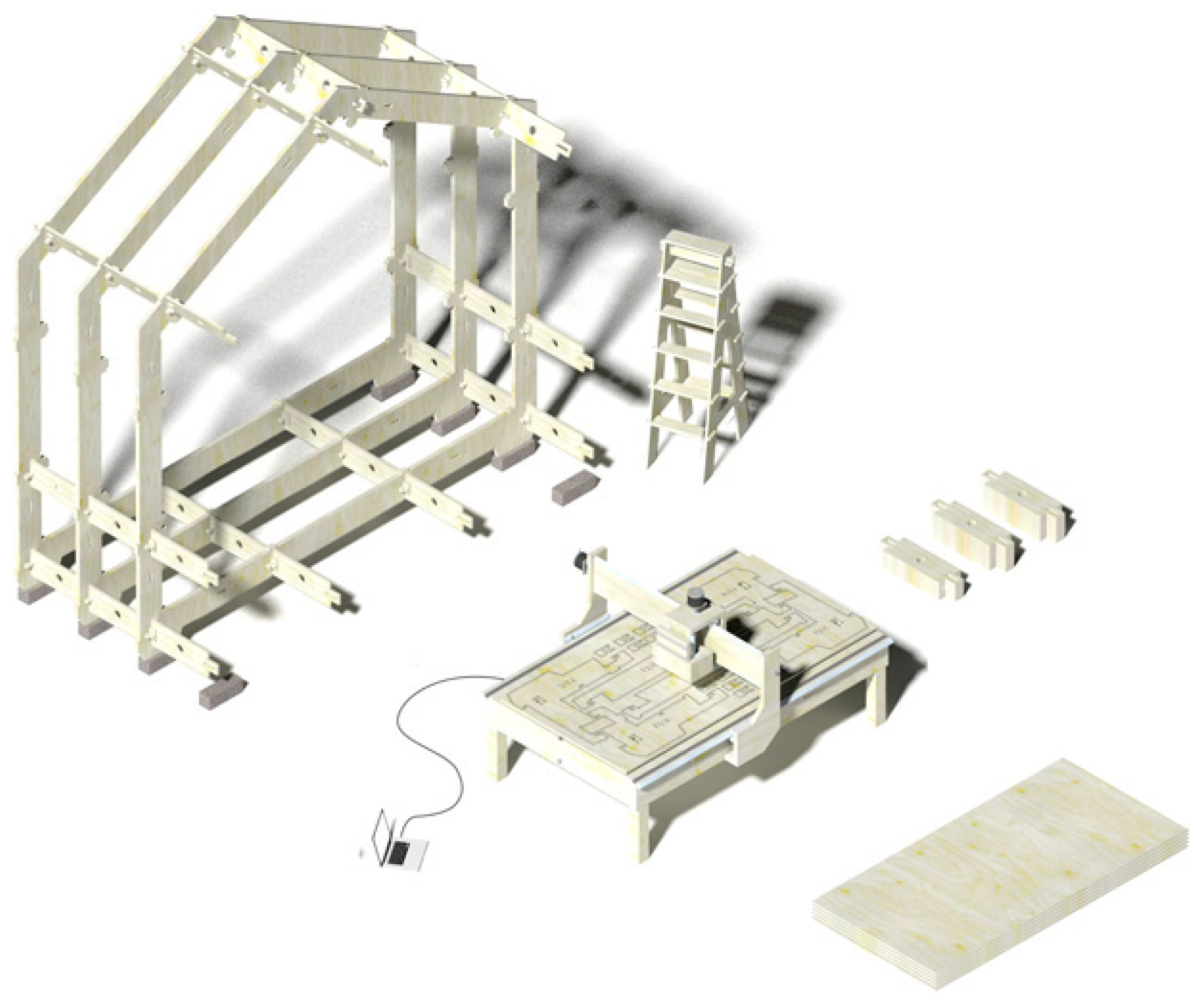
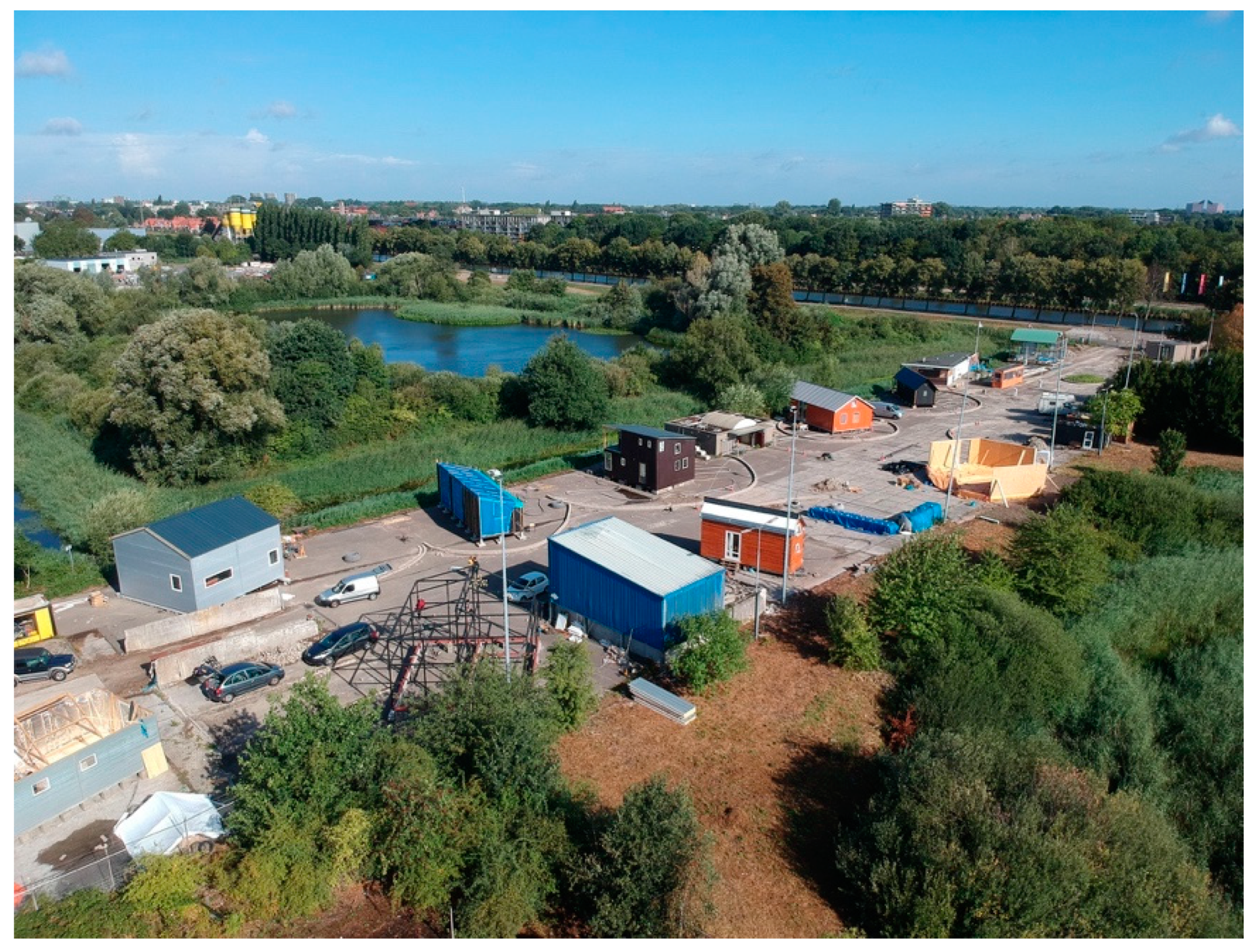
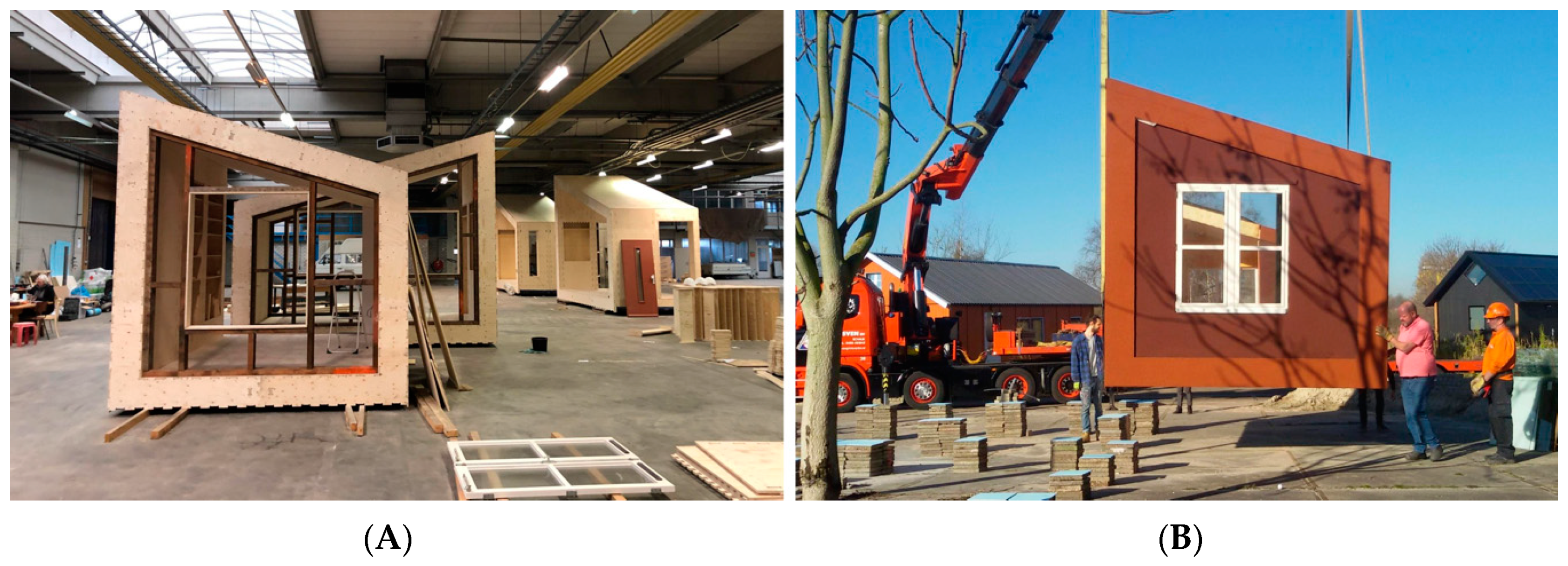
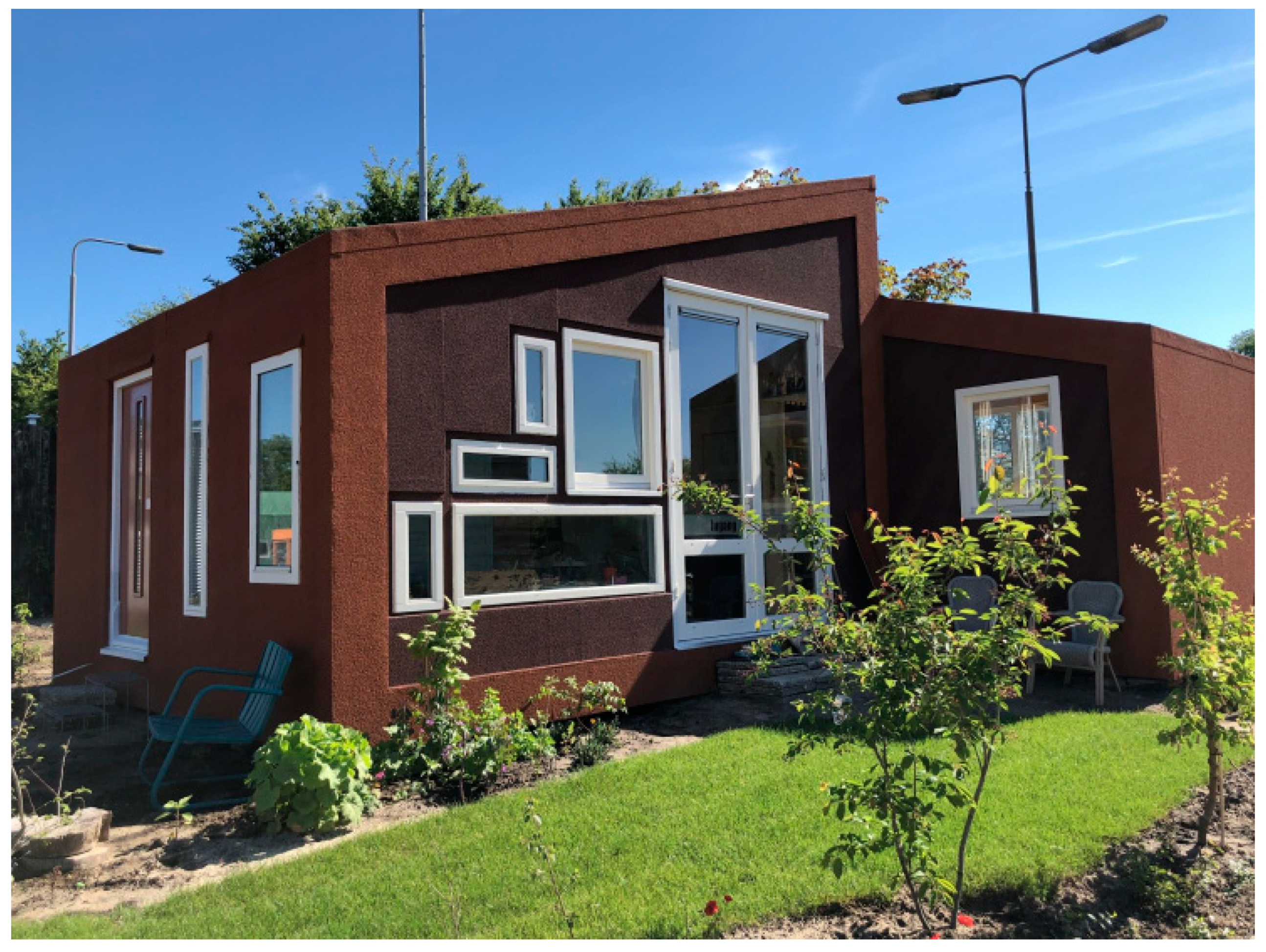
© 2019 by the authors. Licensee MDPI, Basel, Switzerland. This article is an open access article distributed under the terms and conditions of the Creative Commons Attribution (CC BY) license (http://creativecommons.org/licenses/by/4.0/).
Share and Cite
Priavolou, C.; Niaros, V. Assessing the Openness and Conviviality of Open Source Technology: The Case of the WikiHouse. Sustainability 2019, 11, 4746. https://doi.org/10.3390/su11174746
Priavolou C, Niaros V. Assessing the Openness and Conviviality of Open Source Technology: The Case of the WikiHouse. Sustainability. 2019; 11(17):4746. https://doi.org/10.3390/su11174746
Chicago/Turabian StylePriavolou, Christina, and Vasilis Niaros. 2019. "Assessing the Openness and Conviviality of Open Source Technology: The Case of the WikiHouse" Sustainability 11, no. 17: 4746. https://doi.org/10.3390/su11174746
APA StylePriavolou, C., & Niaros, V. (2019). Assessing the Openness and Conviviality of Open Source Technology: The Case of the WikiHouse. Sustainability, 11(17), 4746. https://doi.org/10.3390/su11174746




